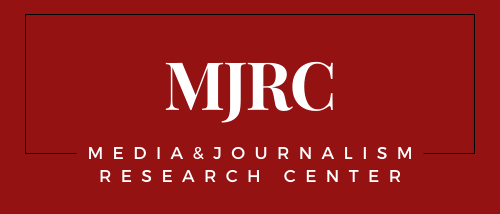How the Rise of the Internet Police Imperils Journalism in Indonesia
Misinformation has flooded the Indonesian internet in recent years. The government’s response will only shrink the space for online news content.
6 December 2019
Tempted with ever cheaper deals, many Indonesians use more than one mobile card, resulting in 400 million cellular subscriptions, which makes Indonesia one of the largest mobile markets of the world. In contrast, less than 4% of Indonesians use a landline today.
The number of internet users has also increased steadily. Still, only 32% of the population used the internet in 2017, which signals a massive potential for growth in the country’s communication technology area, according to a new report about technology, public sphere and journalism in Indonesia, released today by the Center for Media, Data and Society (CMDS).
Indonesia’s geography is an obstacle to connectivity. Java, Bali and parts of Sumatra enjoy good internet connection, but many isolated islands suffer. Moreover, in spite of the high mobile penetration (165%), only some 60% of Indonesia’s households have access to a mobile phone. “Add to that a generally low internet speed and you have an extremely unequal society with pockets of people enjoying better access and others, poorly connected, struggling with isolation,” Nurma Fitrianingrum and Lisette Reuvers, the report’s authors wrote.
In addition, Indonesians can only afford technologies at the cheapest end of the market, resulting in an Android-dominated operating system and mobile phone market.
Among social media, Facebook is leading: its Indonesian market of 130 million is the fourth largest in the world. But, according to the report, “social media platforms, particularly Facebook, became the largest platform for a spate of disinformation websites that have proliferated in Indonesia in recent years.” Indonesia has 43,803 online news media, according to the latest count, but hardly any qualifies as credible sources of information.
The government reacted to the rise of misinformation by deploying an Artificial Intelligence (AI) machine known as Cyber Drone 9 to monitor, check, suspend and block what they decide to be “negative content,” including “fake news” and pornography. However, authorities are increasingly using the fake news problem to police the internet space with the full participation and support of technology giants.
Providers that fail to comply with content-filtering rules risk losing their operating license. Mainstream sites including Tik Tok or Tumblr have been blocked for this reason.
According to the report, “all these developments only show that the internet space will continue to shrink, affecting news media distribution and, in the end, citizens. Threatened by higher tax inspections and the possibility to have their platforms blocked, technology giants are unlikely to confront authorities.”
Simply, Indonesia is a market too big to lose.
The Technology, Public Sphere and Journalism: Indonesia report is part of Media Influence Matrix, run by CMDS through a global research and advocacy alliance, the Media and Power Research Consortium, which consists of more than 50 organizations, including academic institutions, advocacy groups, journalist networks and NGOs. The main goal of this project is to investigate the profound impact that rapid shifts in policy, funding and technology are having on journalism today. Each country report consists of three studies, covering politics and policy, journalism funding and technology.
Support independent media research – your donation helps keep our work open.
Donate
